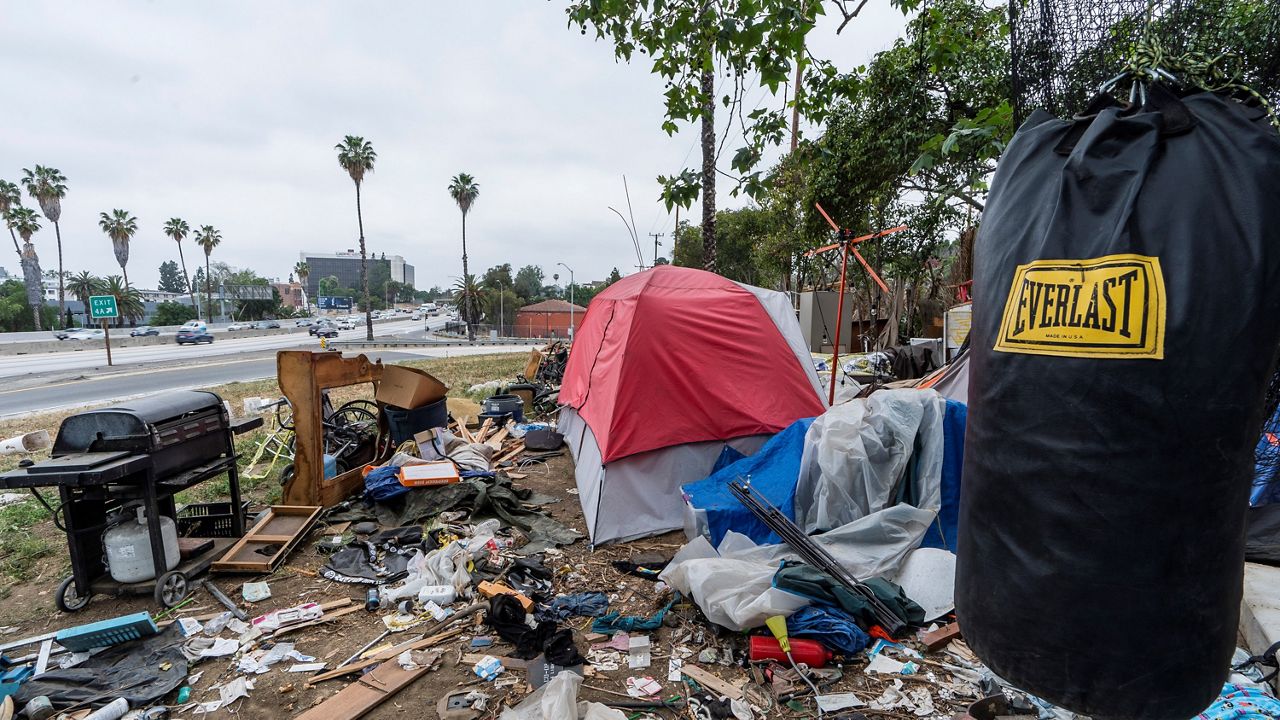LOS ANGELES — When it comes to getting homeless people off the streets in LA, the need for more affordable housing gets most of the attention. But a new report from the nonpartisan think tank RAND Corp. highlights the need for better pay for frontline workers tasked with getting and keeping homeless individuals in permanent housing.
“There are many challenges associated with a low wage,” RAND report lead author Lisa Abraham said Wednesday during a presentation of the findings. “It creates stress, health concerns, housing insecurity and also leads to under investments in certain critical areas of life such as spending on education, health, wellbeing, child care and quality food.”
Bolstering support for the workers tasked with helping homeless individuals re-enter society “could directly translate into improved outcomes for their clients — the homeless population — in terms of both quality and continuity of care.”
There are about 8,000 homeless response sector workers in LA County, the majority of whom are paid $19 to $29 per hour, or $40,000 to $60,000 per year. But to be able to afford to live in LA without being rent burdened, they need to be paid at least $31 per hour, or $64,000 per year, according to the study, which presumed an average rent of $1,600 for a one-bedroom apartment.
At the homeless services nonprofit Chrysalis, which provides mental health care and helps people train, find and keep jobs, president and chief executive Mark Loranger said his agency has a 30% turnover rate among its 275 case workers. Of those, 42% left because they do not make enough money.
Staff turnover, he said, is “incredibly expensive. The cost of recruiting and training and getting people settled in jobs is really steep, but even more importantly, turnover has such a disruptive impact on the clients that we serve. The longer the relationship lasts between our case managers and our clients, the better the outcomes are going to be.”
When a client has a new case manager every few months, it’s difficult to build trust with the homeless community they serve, he added.
“We have built a business model that is deeper than the governments or private sectors that provide these services, and we’ve done it by paying our people too little,” Loranger said. “Our model is focused on community first, which is great. That’s why we exist, but that ends up sometimes being at the expense of the folks that are really doing this work.”
According to the Los Angeles Homeless Services Authority’s most recent point-in-time count, 69,144 people in LA County were unhoused last year. Of those, 41,980 lived in the city of Los Angeles, where Mayor Karen Bass has recently proposed spending $1.3 billion of the city’s $13 billion 2023-2024 fiscal year budget to combat homelessness.
Loranger said there are three things could help his agency retain workers, most of whom are from government and private sector agencies that provide Chrysalis with funding. He is calling for more operating support to pay people better, to make long-term funding commitments and to make contracts consistent, so funding for the same jobs applies across all contracts.
“Raising wages for frontline homeless response sector workers is very difficult for managers and leaders because they have limited ability to change the funding structures,” Abraham said.
The solution, she added, is for funding contracts to not only prioritize paying workers a living wage but to add cost-of-living increases so the organizations tasked with implementing the contracts aren’t on the hook to make up the difference.
For its study, RAND looked at homeless response sector job openings on Glassdoor and Indeed last August to determine wages. The study found that workers who took similar jobs with government agencies, instead of nonprofits, earned a higher income and offered more benefits.
“We build trust with the people we serve one person, one life, one relationship at a time,” said Celina Alvarez, executive director of Housing Works, a nonprofit homelessness charity. Half its frontline staff have lived experience with homelessness or housing insecurity, and some also live in the kind of supportive housing they’re urging homeless individuals to move into.
“This gives people a deep connection to the people we serve and helps them build trust, which is critical in our work,” Alvarez said. When a case worker leaves, “it takes time for new staff to build trust and build rapport with the people we’re serving. When there’s a familiar face, that makes a difference in how it is that we’re able to do the work that we do.”
Frontline homeless response sector workers are first responders just like other intense jobs, such as paramedics and police officers, Alvarez said.
“Those individuals have access to mental health care to help with the emotional impact of the job, but our staff have nothing comparable,” she said. “When staff in the sector go through traumatic situations, they’re expected to immediately come back to work and carry on with the pending needs of the caseloads that they carry.”



